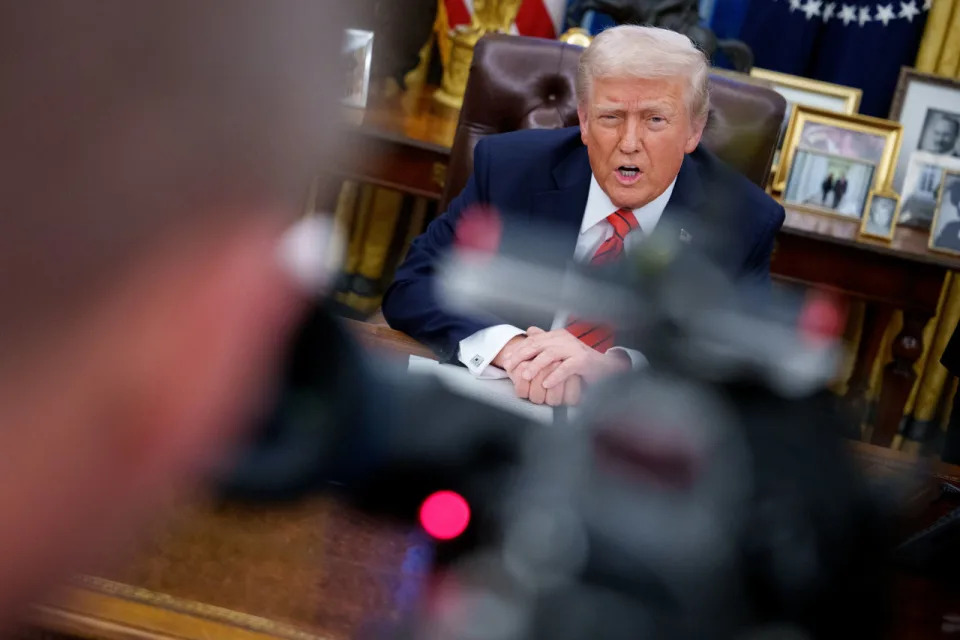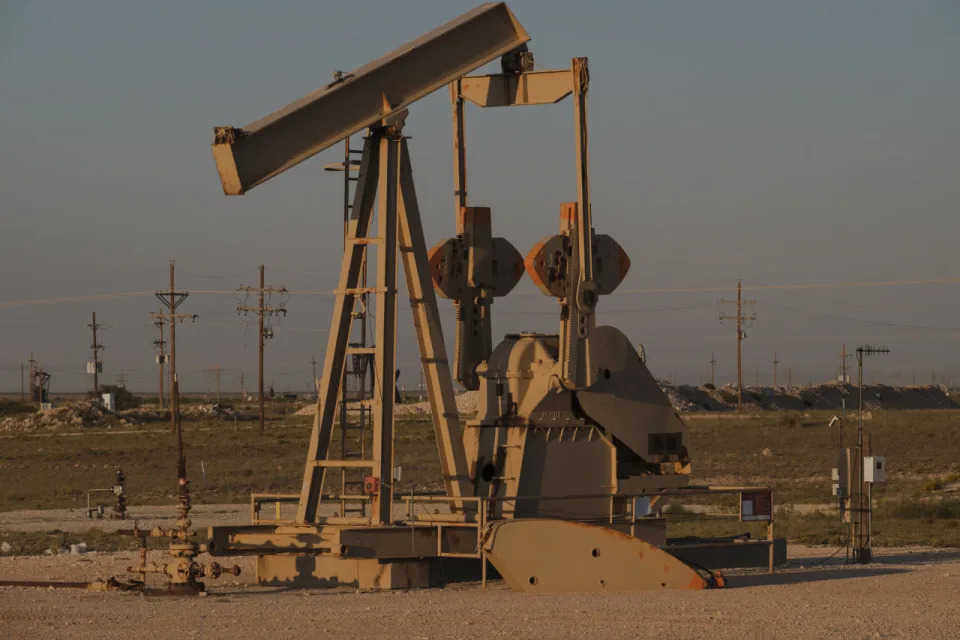
Nothing did more to deliver the White House to Donald Trump than inflation, which helped to sour Americans on former President Joe Biden’s economy.
Inflation is turning into a headache for President Trump, too. It is proving stubborn, just as he and fellow Republicans are rolling out their marquee policies of higher tariffs and lower taxes.
The aggregate boost to inflation from tariffs is likely to be small and from tax cuts smaller still (especially if they are offset with spending cuts). The problem is that Trump has inherited inflation above the Federal Reserve’s 2% target, and his agenda risks keeping it there, making it harder to bring down interest rates.
This is in contrast to his first term, when inflation generally ran at or below 2%. So while Trump raised tariffs and cut taxes in his first term, the effect at the time was to help the Fed meet rather than miss its inflation target.
The latest data underscore the challenge. Core consumer price inflation, which excludes its volatile food and energy components, was 3.3% in January, higher than economists had expected. That same month, hourly wages jumped. And a survey by the University of Michigan showed higher expected inflation in the coming year.
Caveats are in order. The January price jump was concentrated in auto-related components and airfares, which might reverse, perhaps in February. The Fed targets a different core inflation measure that was likely around 2.6% in January. The wage jump might reflect weather distortions. And a Fed survey doesn’t show inflation expectations rising as much as the University of Michigan did.

“We’re close but not there on inflation,” Fed Chairman Jerome Powell told lawmakers Wednesday.
The bad news on inflation largely occurred on Biden’s watch, a point Trump and his officials are hammering home. “BIDEN INFLATION UP!” Trump wrote on social media Wednesday. That same day, on Fox Business, Kevin Hassett, director of Trump’s National Economic Council, said, “We’re not going to whine about it. We’re going to fix it…with supply-side policies, with spending restraint, with deregulation.”
Still, even if the inflation problem began with Biden, it’s a problem for Trump.
On the campaign trail, Trump promised to lower the cost of groceries and energy. Gasoline is slightly more expensive now than on Election Day. (It hasn’t escaped the new administration’s notice that Biden tightened sanctions on Russia just weeks before leaving office, causing oil prices to pop .) Egg prices have shot up because of avian flu .
Mortgage rates, which Trump promised to slash, were 6.9% last week according to Freddie Mac, up from 6.7% the week before the election.
On social media Wednesday, Trump called for lower interest rates, “something which would go hand in hand with upcoming Tariffs!” And yet, his tariff plans are getting in the way of lower rates.
On Feb. 1, Trump announced tariffs of 25% on Canada and Mexico and 10% on China. Morgan Stanley economists estimated those could boost inflation 0.3 to 0.6 percentage point initially. Markets priced in 0.2 point in the immediate aftermath, unsure whether or for how long tariffs would go up. And, indeed, Trump did pause the tariffs on Mexico and Canada for 30 days.

This week, he announced 25% tariffs on all imported steel and aluminum and said reciprocal tariffs on a wider range of products and countries are in the works.
Importers and suppliers are already reacting. Steel companies have already raised prices. Since Trump’s tariff announcement, futures contracts tied to an index of Midwest steel prices have risen about 6%. The price of copper in the U.S. is up relative to the price in Europe.
Republican fiscal plans complicate the inflation and interest-rate outlook. On Wednesday, House Republicans released a budget plan that lowers taxes by $4.5 trillion over the coming decade.
Those estimates represent the cost of extending existing tax cuts and thus don’t much change the outlook for deficits, total demand or inflation. Trump, however, has also asked for additional tax cuts, such as on Social Security benefits, which would add both to their cost and their impact on total demand. Some tax cuts might be front-loaded into early years, adding to the near-term boost in demand.
House Republicans have envisioned sweeping cuts to spending such as on Medicaid, food stamps and student-debt cancellation partly to offset the tax cuts. In principle, that would also offset upward pressure on prices, and help bring down long-term interest rates by reducing issuance of new debt to finance the deficit.
In a Wednesday post on X, Elon Musk predicted that, thanks to his Department of Government Efficiency, “all Americans will benefit from lower interest payments on mortgages, small business debt, credit card and other loans.”
But the benefit might be less than hoped, for several reasons. DOGE so far has picked politically prominent but quantitatively tiny targets such as foreign aid and civil-service salaries. Meanwhile, whether Republicans can muster the votes for deep cuts to social safety net programs is unclear, as they plan big, near-term boosts to military and border security spending.

The Trump team hopes their deregulatory and tax moves could boost the supply side of the economy, reducing inflationary pressure, in particular for energy. Musk is counting on his efforts making federal services more efficient. Some tax cuts, such as accelerated depreciation, could boost investment and productivity.
But supply-side improvements usually unfold too slowly to affect inflation in the near term. The Trump administration has taken some small steps, such as loosening truckers’ hours-of-service regulations to speed up the replenishment of chicken flocks culled because of avian flu. Trump has pressed Saudi Arabia to increase oil output. He has spoken with Russian President Vladimir Putin in hopes of ending the war in Ukraine, which could ease sanctions on Russian oil.
For now, there’s little sign inflation worries have hurt him politically. In a January Wall Street Journal opinion poll , 68% of respondents thought tariffs would make goods more expensive, yet 48% still approved of them—roughly as many as disapproved.
But the public’s patience isn’t infinite. The longer inflation stays stubborn, the less Trump can blame Biden.
Write to Greg Ip at greg.ip@wsj.com





